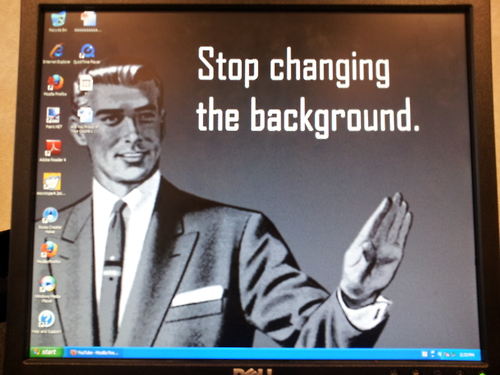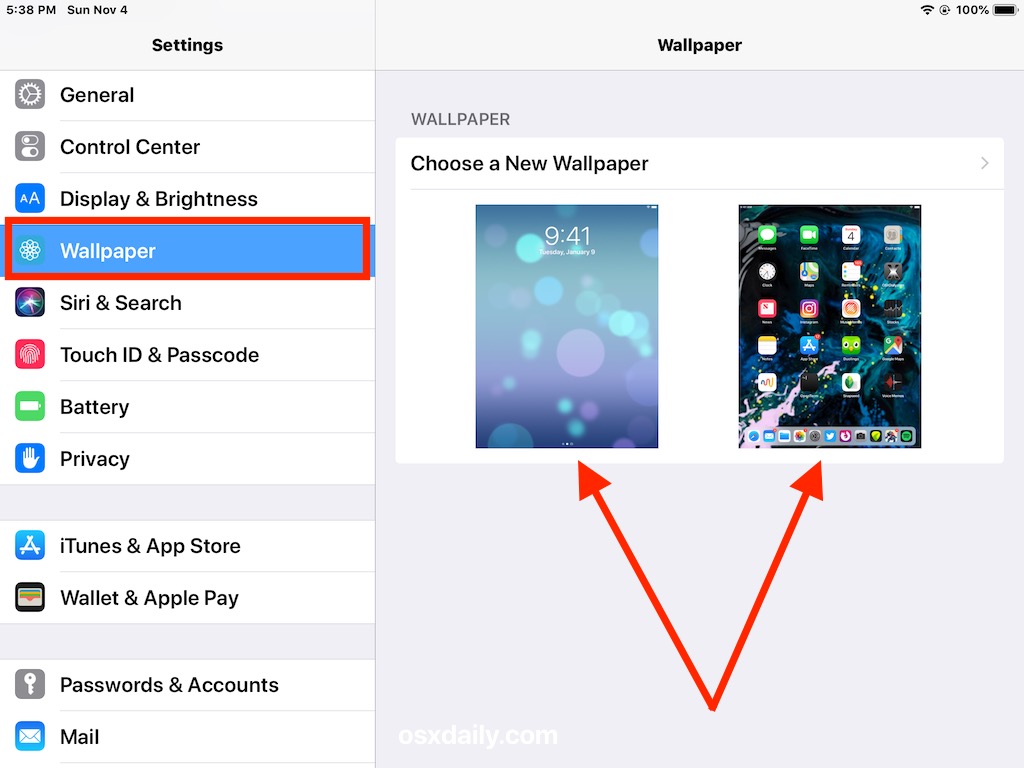Stop Roku from changing my screen saver Does anybody know a way to stop Roku from changing my screensaver every few weeks when they decide it needs to be different!? I have six Roku devices and I'm continually having to reset my wallpapers because they want their holiday paper on my TV. Select Start Settings Personalization Background, and then select a picture, solid color, or create a slideshow of pictures. You might also like. See a new image on your desktop every day with Bing Wallpaper.
There could be many good reasons you may want to prevent users from changing the desktop background on Windows 10. Perhaps you work for a company that wants devices (or guest computers) only to display a custom wallpaper with a company logo. Or at home, if you share your computer with other people, you may want to see a particular desktop background, but someone keeps changing it.
Windows 10 offers a few ways to keep users from changing the desktop background on a computer, including using Group Policy and modifying the Registry.
How to prevent users from changing wallpaper using Group Policy
You can keep users from changing the current desktop background in multiple ways, but the quickest method is to use the Local Group Policy Editor, as long as you’re running Windows 10 Pro, Enterprise, or Education.
There are two ways to accomplish this task: You can enforce a default desktop wallpaper, or you can prevent users from changing the desktop background settings.
Prevent users from changing desktop background
Before you begin, make sure to set an image as a default on the desktop using the Settings app or right-clicking an image and selecting Set as desktop background.
Then use the Local Group Policy Editor with the following steps to restrict users from changing the desktop background:

- Use the Windows key + R keyboard shortcut to open the Run command.
- Type gpedit.msc and click OK to open the Local Group Policy Editor.
- Browse the following path:
User Configuration > Administrative Templates > Control Panel > Personalization - Double-click the Prevent changing desktop background policy.
- Select the Enabled option.
- Click Apply.
- Click OK.
Once you complete these steps, you don’t need to restart your computer. The settings will apply immediately. You can double-check by going to Settings > Personalization > Background, where you’ll notice that options aren’t available, and you’ll also see a message that reads “Some settings are managed by your organization”.
Enforce a default desktop background


Alternatively, you can use the Local Group Policy to enforce a desktop background, which will also prevent users from changing the image using the following steps:
Stop Changing My Wallpaper Screen
- Use the Windows key + R keyboard shortcut to open the Run command.
- Type regedit, and click OK to open the registry.
- Browse the following path:
User Configuration > Administrative Templates > Desktop > Desktop - Double-click the Desktop Wallpaper policy.
- Select the Enabled option.
- Under “Options,” type the path for the image you want to set as a default background and select the style.
- Click Apply.
- Click OK.
Once you complete these steps, you’ll need to restart your computer to see the changes.
Using this method, you won’t see a “Some settings are managed by your organization” message in the Personalization settings, and users won’t be able to change the current desktop wallpaper.
These instructions will even prevent wallpapers for syncing when you use a Microsoft account and settings syncing is enabled. The color accent will continue to sync, but you can prevent this from happening. Just go to Settings > Accounts > Sync your settings and turn off the Theme toggle switch.
If you change your mind, you can always revert the changes by following the same steps, but on step No. 4 make sure to select the Not Configured options for the Desktop Wallpaper and Prevent changing desktop background policies.
How to prevent users from changing wallpaper using Registry
If you’re running Windows 10 Home, you won’t have access to the Local Group Policy Editor, but you can still prevent users from changing the desktop background by modifying the Registry.
Important: This is a friendly reminder to let you know that editing the registry is risky, and it can cause irreversible damage to your installation if you don’t do it correctly. We recommend making a full backup of your computer before proceeding.
In the same way as with the Local Group Policy Editor, there are two ways to accomplish this task, you can enforce a default desktop wallpaper, or you can prevent users from changing the desktop background settings.

Prevent users from changing desktop background
Before you begin, make sure to set an image as default on the desktop using the Settings app or right-clicking an image and selecting Set as desktop background.
Then if you’re running Windows 10 Home, or you simply prefer to use the Registry to make changes to the OS, use the following steps to restrict users from setting a new wallpaper:
- Use the Windows key + R keyboard shortcut to open the Run command.
- Type regedit, and click OK to open the registry.
- Browse the following path:
HKEY_CURRENT_USERSoftwareMicrosoftWindowsCurrentVersionPolicies - Right-click the Policies (folder) key, select New, and click on Key.
- Name the key ActiveDesktop and press Enter.
- Right-click on the right side, select New, and click on DWORD (32-bit) Value.
- Name the new DWORD NoChangingWallPaper and press Enter.
- Double-click the newly created DWORD and change its value from 0 to 1.
- Click OK.
After completing the steps, users will no longer be able to set a new image as a background using the Settings app and the right-click “Set as desktop background” will not work.
Enforcing a default desktop background
Alternatively, you can modify the Registry to enforce a specific desktop background, which prevents users from changing the image.
- Use the Windows key + R keyboard shortcut to open the Run command.
- Type regedit, and click OK to open the registry.
- Browse the following path:
HKEY_CURRENT_USERSoftwareMicrosoftWindowsCurrentVersionPolicies - Right-click the Policies (folder) key, select New, and then click on Key.
- Name the key System and press Enter.
- Right-click on the right side, select New, and click on String Value.
- Name the string Wallpaper and press Enter.
- Double-click the newly created String Value and set the path for the default wallpaper you want to use: For example, C:defaultwall.jpg.
- Click OK.
- Right-click on the right side, select New, and then click on String Value.
- Name the string WallpaperStyle and press Enter.
- Double-click the newly created string and change its value to set your wallpaper style. You can use one of the following options:
- 0 – Centered
- 1 – Tiled
- 2 – Stretched
- 3 – Fit
- 4 – Fill
- Click OK.
Once you complete the steps, you’ll need to restart your computer to see the new default wallpaper.
Using these steps will also prevent wallpapers from syncing using a Microsoft account, in the case that you sync your settings. The color accent will continue to sync, but you can go to Settings > Accounts > Sync your settings and turn off the Theme toggle switch to prevent that from happening.
You can always revert the changes by right-clicking and deleting the ActiveDesktopand System (folder) keys in the Registry.
Need to lock down the desktop wallpaper on your computer to stop kids from changing it? In this tutorial, we’ll walk you through the steps to prevent users from changing the current desktop background using the Local Group Policy Editor and Registry Editor.
Method 1: Prevent Changing Desktop Background in Windows 10 Using Group Policy
- Open the Local Group Policy Editor and navigate to:
User Configuration -> Administrative Templates -> Control Panel -> PersonalizationDouble-click the Prevent changing desktop background policy on the right side.
- Check the Enabled radio box, click Apply and OK.
- The policy settings will apply immediately. Now when you try to change the desktop wallpaper by going to Settings -> Personalization -> Background, you’ll see a message that says “Some settings are managed by your organization“, and the options are greyed out.
How Do I Change My Wallpaper Back To Normal
Method 2: Prevent Changing Desktop Background in Windows 10 Using Registry Editor
- Open the Registry Editor and browse to the following key:
HKEY_CURRENT_USERSoftwareMicrosoftWindowsCurrentVersionPoliciesRight-click the Policies key on the left side, select New -> Key. Name it ActiveDesktop.
- With the new ActiveDesktop key selected, right-click any empty space on the right side, select New -> DWORD (32-bit) Value. Name the new DWORD NoChangingWallPaper and set its value to 1.
- Reboot your computer for the changes to take effect. Your desktop background is now protected and anyone can not tamper it. When you right-click on a image and select “Set as desktop background” from context menu, nothing will happen.
Stop Changing My Wallpaper Mac
Alternatively, you can also set a default desktop background in Windows 10 to prevent users from changing the desktop wallpaper image.